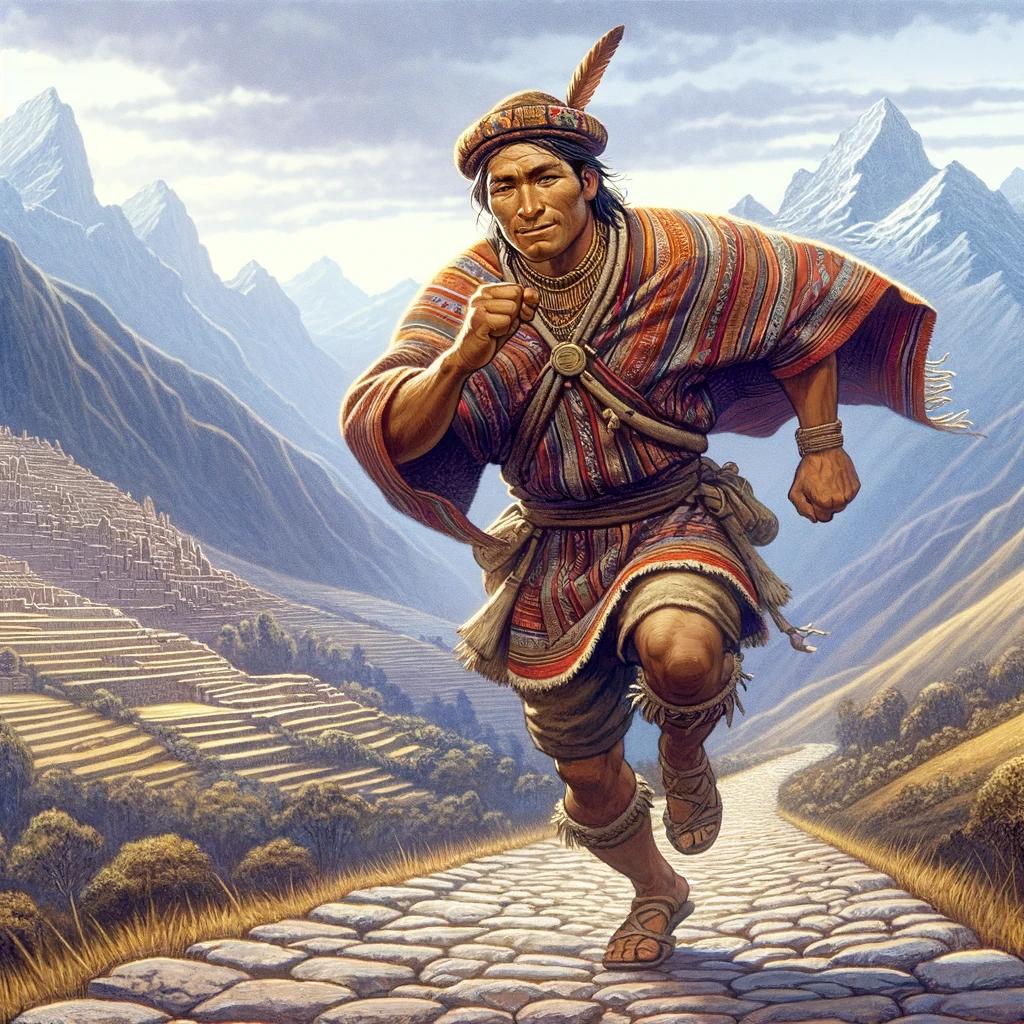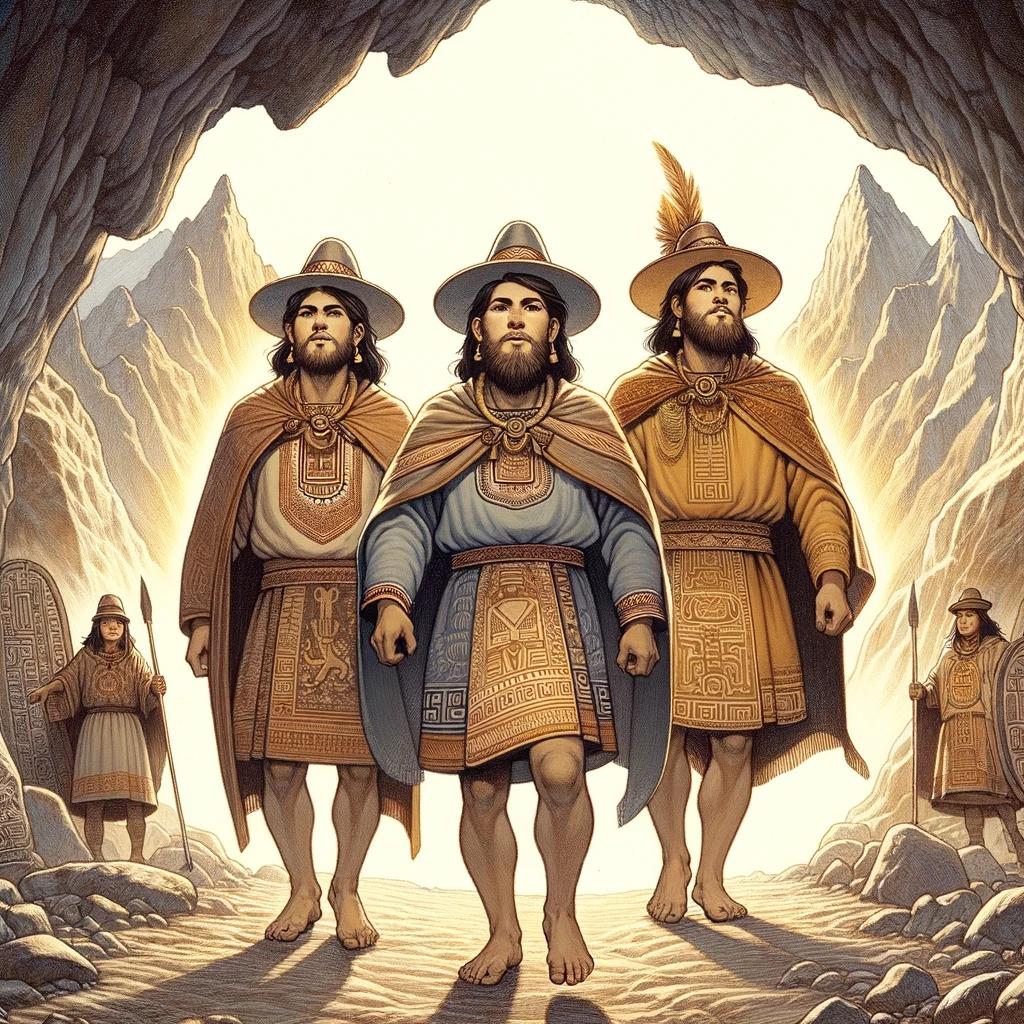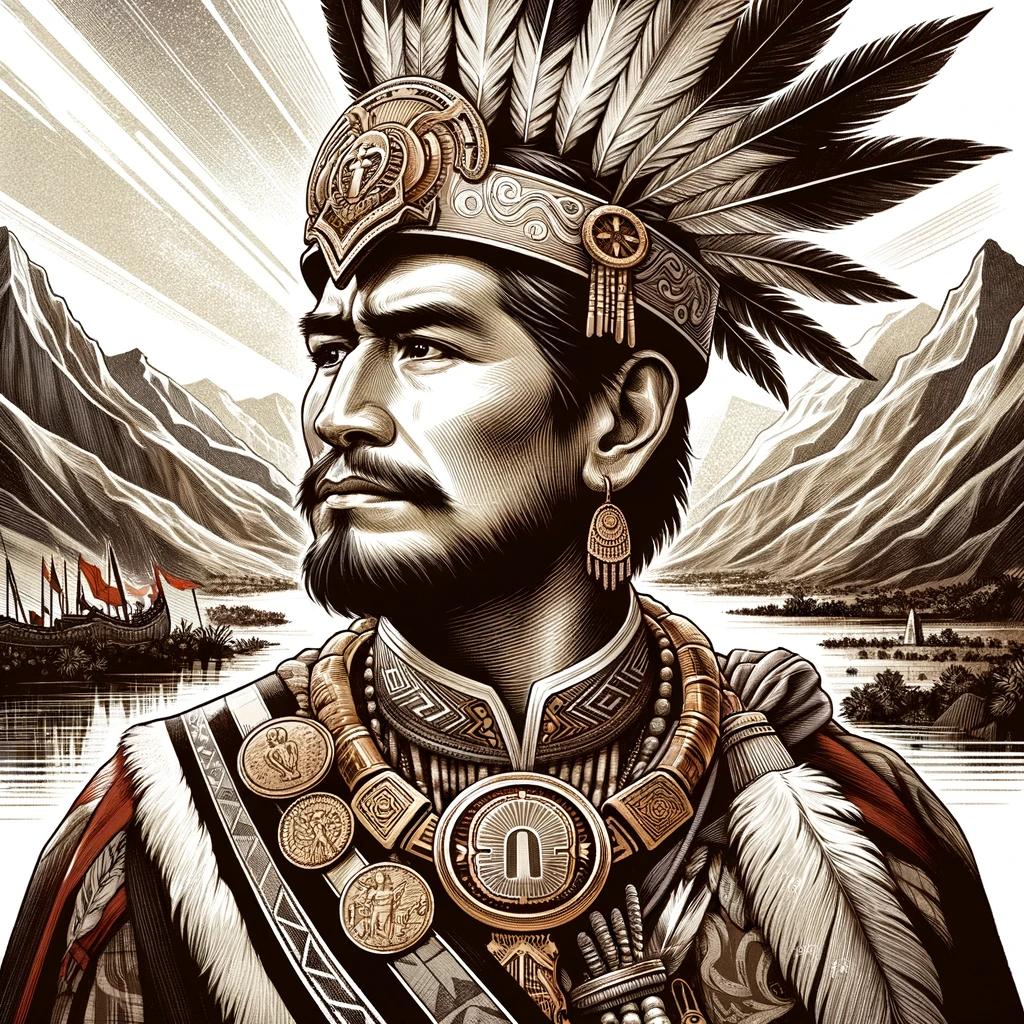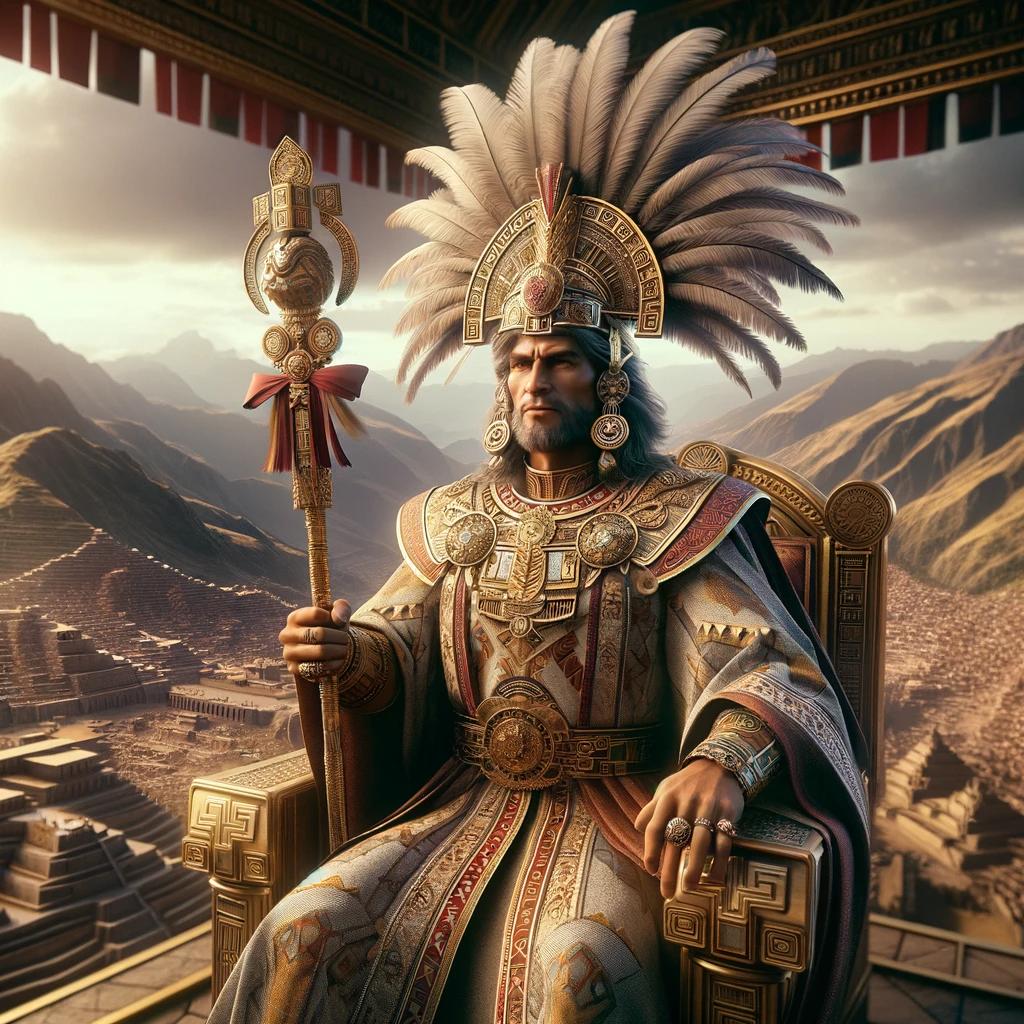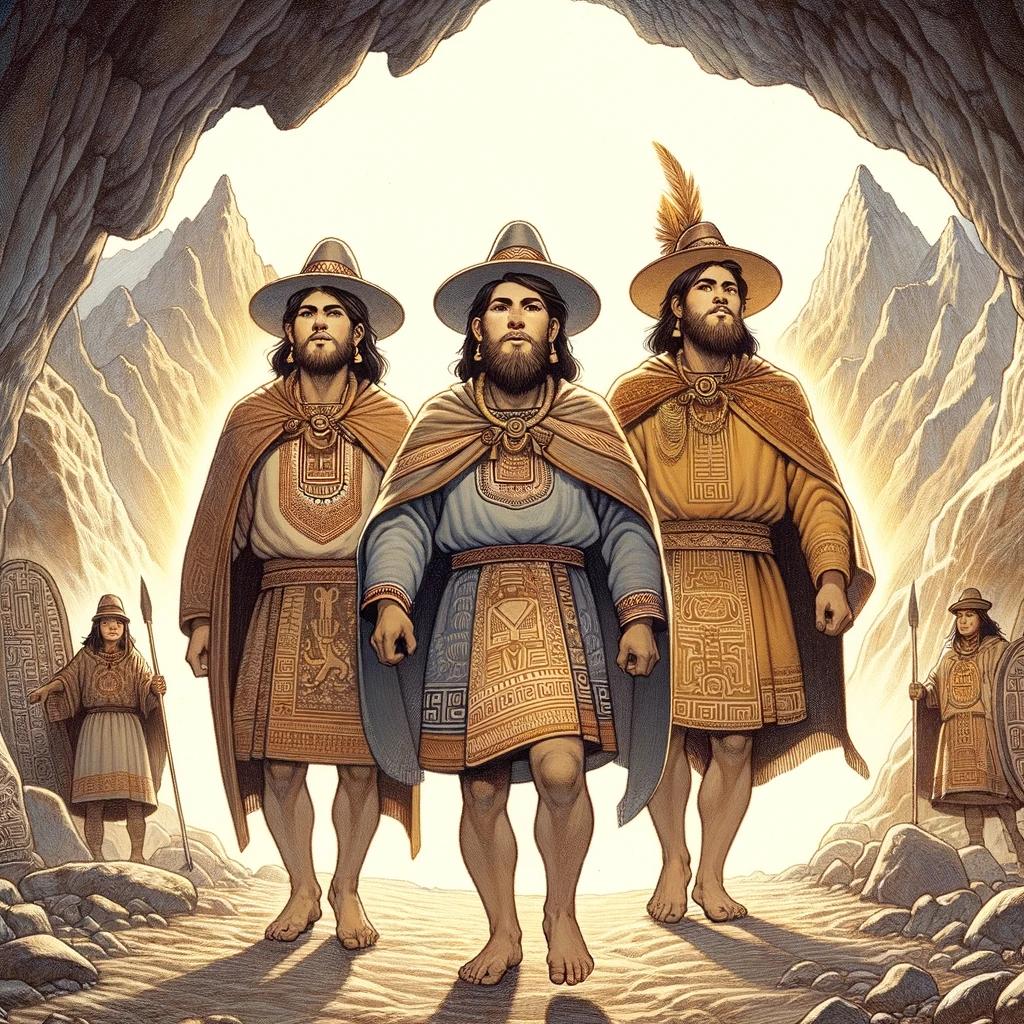The Chasquis: Incas’ Elite Messengers
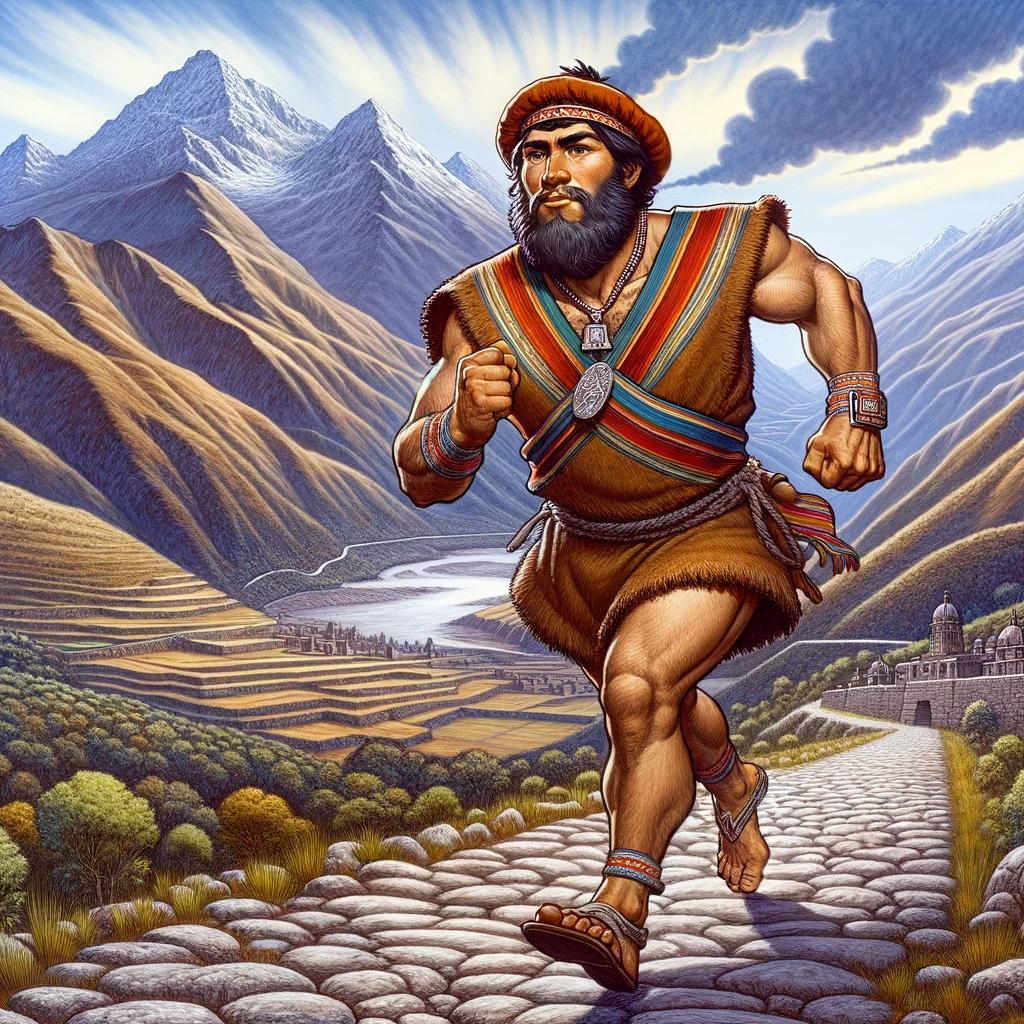
The Chasquis, known as the chasqui inca or inca chasquis, played a vital role in the Inca Empire, serving as highly trained messengers. They carried messages and packages across the extensive Inca road system known as Qhapaq Ñan, embodying the definition of dedication and speed in the Andean landscape.
Selected for their strength and fitness, Chasquis swiftly delivered royal messages and important news from provinces to the capital, Cusco. With relay stations called chaskiwasi strategically located every 2.5 kilometers, these messengers ensured efficient communication.
They were the inca messengers, crucial for the empire’s stability and coordination.
Chasquis utilized various forms of communication, including oral messages and the use of quipus, to convey information. Their significance and effectiveness in Inca society have been well-documented by historical sources, highlighting them as the incan runners who were pivotal to the Inca’s administrative success.
The Role of Chasquis in the Inca Empire:
In the Inca Empire, the Chasquis played a vital role in maintaining effective communication throughout the vast empire. Known for their unparalleled speed and reliability, they were the quintessential chasquis meaning of efficiency.
They were highly skilled and physically fit individuals who were selected and trained to become messengers. Their responsibilities as couriers involved ensuring the swift and secure delivery of important messages and small packages, embodying the spirit of the chasqui definition.
Selection and Training of Chasquis
The process of selecting Chasquis involved choosing the strongest and fittest young individuals from Inca society. These candidates would undergo rigorous training to develop their speed, endurance, and agility. The training would include long-distance running, as well as carrying messages and packages over challenging terrains, embodying the latin american spirit of resilience.
Only those who successfully completed the training would become official Chasquis, becoming part of a revered group known as the inca chasqui.
Responsibilities of Chasquis as Couriers
Once chosen, the Chasquis had the important responsibility of carrying messages from the Inca or the king to various provinces and army commanders. They were also responsible for bringing important news and notices from the provinces back to the capital city of Cusco.
Their role as couriers ensured the timely dissemination of information within the empire, making them the what is a chasqui in every sense of the word.
Carrying Messages and Packages
The Chasquis would carry messages and small packages using a well-developed relay system. Along the extensive roads of the Inca empire, relay stations known as chaskiwasi were strategically placed approximately 2.5 kilometers apart from each other. At these stations, the Chasquis would exchange their messages with a new messenger, ensuring a continuous flow of communication.
- The Chasquis, known as the chasqui was, in their shifts, would run in one direction, passing the message to the next Chasqui, who would run in the opposite direction towards the destination.
These runners, highly trained and physically fit, were integral to the rapid communication system.
- This relay system, a cornerstone of the chasquis system, allowed messages to be delivered quickly over considerable distances, with the Chasquis covering up to 300 kilometers per day through the Andes mountains and along the coast.
- Their ability to transport messages and packages efficiently contributed to the overall effectiveness of the Inca Empire‘s communication network, showcasing the empire’s agility and the strategic importance of these messengers.
The Chasquis were the lifeline of communication in the Inca Empire, ensuring the efficient transmission of information across vast distances.
Chosen from the fittest of the Inca society, they were not just messengers but vital components of governance and military strategy.
The Inca Road System:
The Extensive Network of Inca Roads
The roads of the Inca Empire covered thousands of miles, stretching across diverse terrains such as mountains, valleys, and forests. These well-constructed paths were meticulously engineered, taking advantage of natural features and utilizing advanced techniques such as cut stones and retaining walls.
These roads were designed to withstand the test of time and endure harsh weather conditions, ensuring uninterrupted communication across the empire. The design reflected the Inca’s understanding of their environment, allowing for the swift movement of the chasquis and other state runners along these routes.
Chaskiwasi: Relay Stations along the Roads
Strategically placed along the Inca roads were chaskiwasi, relay stations where the chasquis, or messengers, would exchange messages with fresh runners to ensure swift delivery. These stations, integral to the chasquis were chosen for their visibility and accessibility, were typically located about 2.5 kilometers apart, facilitating the travel the Inca road system effectively.
Chaskiwasi were lightweight structures positioned at elevated locations to offer clear visibility. These stations provided a crucial link in the communication chain, enabling messages to be swiftly passed from one chasqui to another throughout the empire.
Strategic Placement of Chaskiwasi for Communication Efficiency
The placement of chaskiwasi was carefully planned to maximize communication efficiency. These stations were strategically positioned, taking into account geographic features, accessibility, and the distance that could be covered in a day’s journey.
Their optimal placement ensured that messages could be relayed swiftly, enabling effective communication between the capital city of Cusco and the farthest corners of the empire.
Forms of Communication:
Communication was vital in the Inca Empire, and the Chasquis employed various methods to convey messages effectively. This section explores the different forms of communication utilized by the Chasquis.
Oral Messages Carried by Chasquis
The Chasquis were skilled runners who swiftly carried important oral messages across vast distances.
With their remarkable speed and endurance, they delivered verbal instructions from the Inca to provincial leaders or military commanders. This ensured rapid communication and facilitated efficient decision-making within the empire.
Use of Quipus for Written Messages
In addition to oral messages, the Chasquis also transported written messages in the form of quipus.
Quipus were intricate systems of knotted strings that contained valuable information. While it is unclear if the Chasquis could decipher the meaning behind the quipus, their reliable transportation ensured the safe delivery of these encoded messages to designated recipients, such as khipukamayoq experts who could interpret their contents accurately.
Emergency Signaling through Fires and Smoke
In times of emergencies, such as an invasion or uprising, the Chasquis employed a unique method of communication by using fires and columns of smoke. This signaling system allowed them to quickly transmit distress messages across vast distances, enabling the Inca to receive timely reports and respond accordingly.
By utilizing this visual communication method, the Chasquis played a crucial role in ensuring the empire’s security and effective crisis management, becoming an integral part of the Inca’s defensive and emergency strategies.
The Effectiveness and Significance of Chasquis:
The Chasquis, as highly trained runners, possessed exceptional speed and agility, allowing them to navigate the challenging terrain of the Inca Empire with remarkable swiftness. Their physical capabilities enabled them to cover long distances quickly and ensure the prompt delivery of messages and packages.
Speed and Agility of Chasqui Runners:
The Chasquis were selected from the strongest and fittest members of Inca society, ensuring their ability to run at impressive speeds. Their agility allowed them to maneuver through rugged paths, steep mountains, and dense forests, overcoming natural obstacles with ease.
These runners epitomized the most important qualities required for the demanding tasks they were assigned.
Daily Distance Covered by Chasquis:
Operating within a highly efficient relay system, Chasquis achieved a remarkable daily distance of up to 300 kilometers. By passing on their messages to the next runner at strategically placed relay stations known as chaskiwasi, they ensured the seamless transmission of communication across vast stretches of the Inca road network, including the royal road that connected all parts of the empire.
Chasquis as an Essential Communication Link in the Empire:
The Chasquis served as a vital communication link connecting the far-flung provinces of the Inca Empire with the capital, Cusco. Their swift delivery of messages played a crucial role in maintaining the empire’s centralized control, facilitating the sharing of important information, and ensuring effective governance, military coordination, and economic exchange.
Cultural and Social Importance:
The Chasquis held significant meaning and symbolism in Inca society, representing the efficient flow of information and communication throughout the empire. Their role as messengers not only facilitated the exchange of important messages but also fostered economic and cultural connections among different regions.
Chasqui Meaning and Symbolism in Inca Society
The term “Chasqui” derived from the Quechua word “chaski,” encompassing notions of reception, acceptance, and consent. In the historical context of the Inca Empire, it also referred to a postilion or the one who exchanges.
The
selection of physically fit and strong young individuals for this role showcased the importance placed on physical prowess in Inca society. Chasqui means the one chosen for strength and endurance, embodying the ideal attributes of Inca messengers.
Economic and Cultural Exchange through the Chaski System
The Chaski System played a vital role in facilitating economic and cultural exchange among different provinces of the Inca Empire. The Chasquis served as conduits for trade-related information, allowing for the efficient transportation of goods and services across vast distances, enhancing trade routes that connected the coast and the mountains, and facilitating a network that spanned the entire empire.
Impact of Chaskis on Inca Warfare and Defense
Chaskis played a crucial role in matters of warfare and defense within the Inca Empire. Their ability to relay messages swiftly and accurately aided in the coordination of military campaigns, facilitating the swift deployment of troops and prompt responses to potential threats.
The Chaskis’ crucial role in enhancing the Empire’s defensive capabilities cannot be understated, making them an essential element in the Inca strategy for maintaining power and control over their vast territories.
Legacy and Historical Accounts:
The legacy of the Chasquis in the Inca Empire is preserved through records and chronicles that have provided valuable insights into their service. These historical accounts offer glimpses into their selection process, training methods, and the crucial role they played in facilitating communication across vast distances.
Records and Chronicles of Chaski Service
Historical records and chronicles provide firsthand accounts of the Chasqui system in the Inca Empire. These documents detail the selection criteria for Chasquis, their rigorous training regimens, and the organizational structure of the messenger system.
They also shed light on how the Chaskis were held in high regard and esteemed for their invaluable service.
Modern Understanding and Recognition of Chasquis’ Contributions
In modern times, there is a growing recognition of the significant contributions made by the Chasquis in the Inca Empire. Scholars and historians have studied their role as an intricate part of Inca society, emphasizing their efficiency, reliability, and the vital role they played in maintaining communication within the empire.
The Chasquis’ endurance running capabilities and their ability to transmit messages swiftly are admired and celebrated as remarkable feats of human perseverance.
Comparison to Other Ancient Communication Systems
When evaluating ancient communication systems, the Chasquis stand out for their unique characteristics and effectiveness. Comparisons can be drawn between the Chasqui network and other communication methods employed by different civilizations across the world.
Studying these comparisons can provide insights into the strengths and weaknesses of various systems and further highlight the remarkable nature of the Chasqui system in the Inca Empire.
The Chasquis left an indelible mark on the history and culture of the Inca Empire.
Their exemplary service as messengers and couriers has had a lasting impact on Inca society. Let’s explore the various aspects of their enduring legacy:
Cultural and Social Importance
- The Symbolism of Chasqui: The Chasquis held significant symbolic meaning in Inca society, representing the importance of communication, unity, and cooperation among different regions.
- Economic and Cultural Exchange: Through the Chaski system, the Inca Empire fostered economic and cultural exchange between provinces, allowing for the spread of goods, ideas, and traditions.
- Role in Inca Warfare: As vital communication links, Chasquis played a crucial role during times of conflict, ensuring the swift delivery of military orders and intelligence.
Historical significance
- Records and Chronicles: The accounts of Chasquis’ service have been documented in the records and chronicles of the Inca civilization, providing valuable insights into their role and accomplishments.
- Recognition of Contributions: Modern understanding and recognition of the Chasquis’ contributions have shed light on the efficiency and effectiveness of their communication system, enhancing our understanding of the Inca Empire.
- Comparison to Other Ancient Systems: When comparing the Chaski system to other ancient communication systems, such as those of the Romans or Greeks, its unique characteristics and achievements become apparent.
Overall, the enduring legacy of the Chasquis in Inca history can be seen through their cultural, social, and military contributions, as well as their historical records that highlight their significance.
Their efficient communication network and dedication to their duties played a crucial role in maintaining the cohesion and organization of the Inca Empire.
.
.

